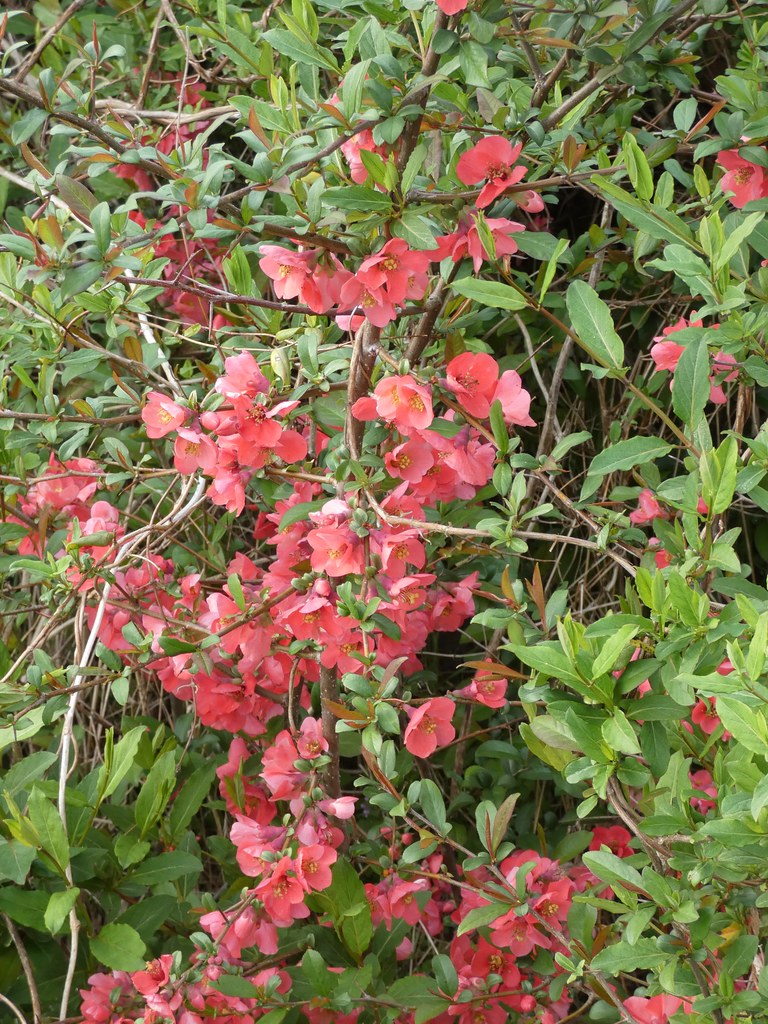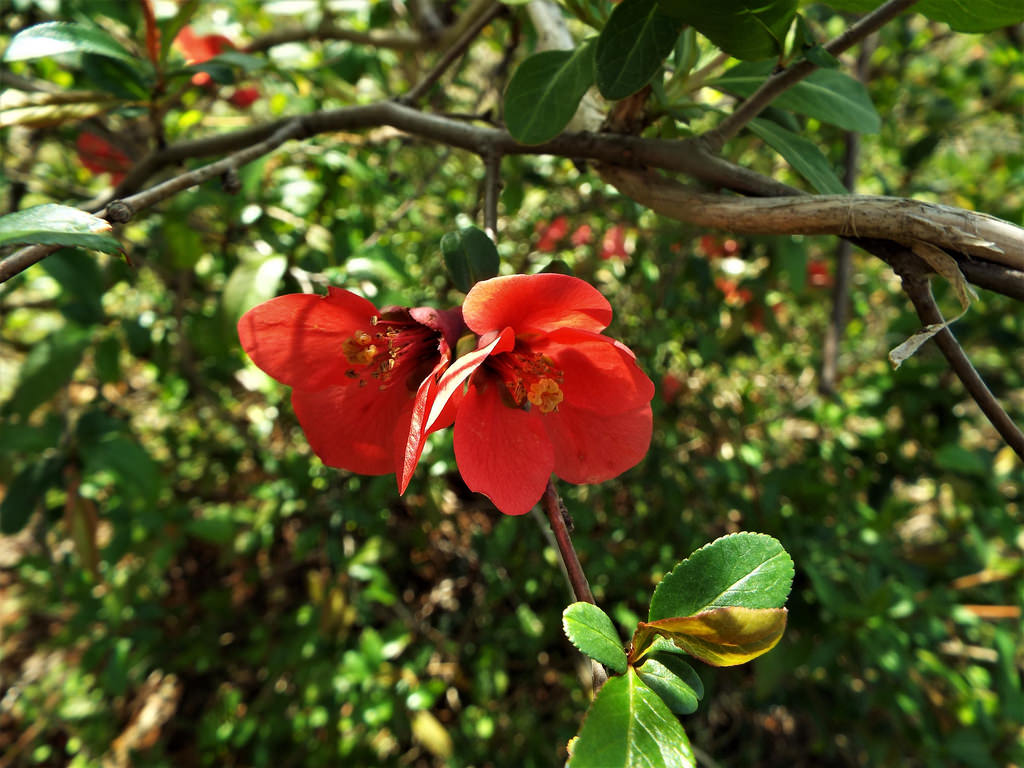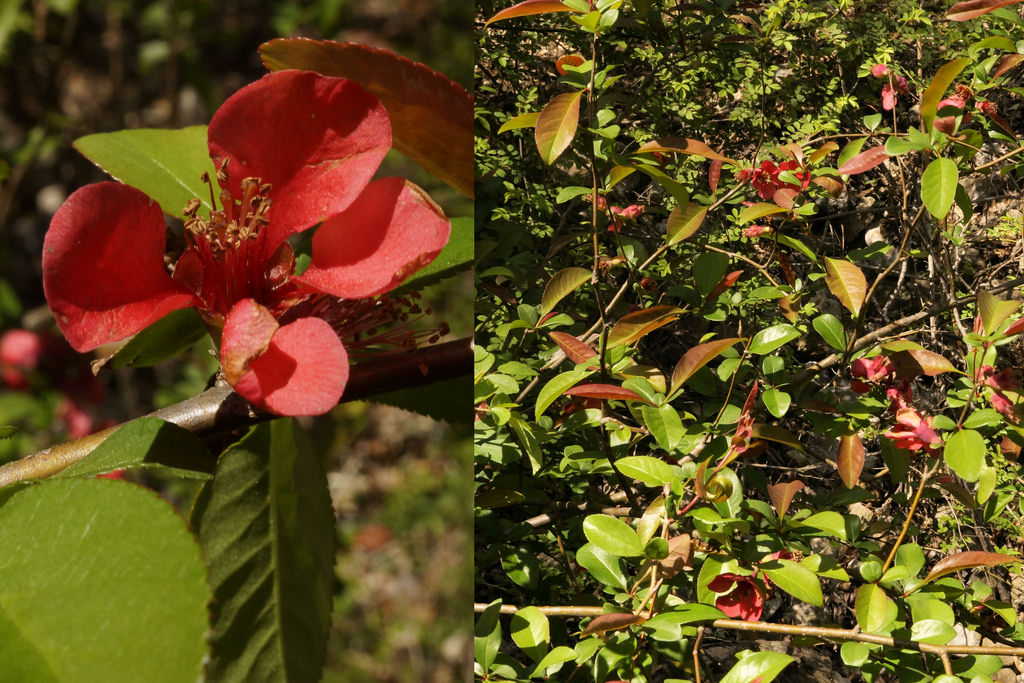Map Snapshot





15 Records
Seasonality Snapshot
Source: Wikipedia
| Chaenomeles speciosa | |
|---|---|

| |
| Illustration by A.J. Wendel, 1868 | |
| Scientific classification | |
| Kingdom: | Plantae |
| Clade: | Tracheophytes |
| Clade: | Angiosperms |
| Clade: | Eudicots |
| Clade: | Rosids |
| Order: | Rosales |
| Family: | Rosaceae |
| Genus: | Chaenomeles |
| Species: | C. speciosa
|
| Binomial name | |
| Chaenomeles speciosa | |
| Synonyms[1] | |
Chaenomeles speciosa, the flowering quince, Chinese quince or Japanese quince,[1][2] is a thorny deciduous or semi-evergreen shrub native to eastern Asia. It is taller than another commonly cultivated species, C. japonica, usually growing to about 2 m (6 ft 7 in).[1][2] The flowers are usually red, but may be pink, white or green.[1][3] The fruit is a fragrant, hard pome that resembles a quince.[2]
Cultivation
[edit]This plant is widely cultivated in temperate regions for its twining habit and its showy flowers which appear early in the season, occasionally even in midwinter. It is frequently used as an informal low hedge. Numerous cultivars with flowers in shades of white, pink and red have been selected. The following cultivars and hybrids have gained the Royal Horticultural Society's Award of Garden Merit:[4]
The following cultivars have received the Royal Horticultural Society's Award of Garden Merit:
See also
[edit]- Pseudocydonia (C. sinensis), also called mugua and Chinese quince
- Papaya, a tropical fruit that shares the name mugua
References
[edit]- ^ a b c d "Chaenomeles speciosa (sweet) Nakai". The World Flora Online. 2023. Retrieved 5 July 2023.
- ^ a b c Bailey, L.H.; Bailey, E.Z.; the staff of the Liberty Hyde Bailey Hortorium. 1976. Hortus third: A concise dictionary of plants cultivated in the United States and Canada. Macmillan, New York.
- ^ "RHS Chaenomeles Speciosa 'Yukigoten'". RHS.
- ^ "AGM Plants - Ornamental" (PDF). Royal Horticultural Society. July 2017. p. 16. Retrieved 24 January 2018.
- ^ "Chaenomeles speciosa 'Geisha Girl'". RHS. Retrieved 12 April 2020.
- ^ "Chaenomeles speciosa 'Moerloosei'". RHS. Retrieved 12 April 2020.
- ^ "Chaenomeles × superba 'Pink Lady'". RHS. Retrieved 12 April 2020.


